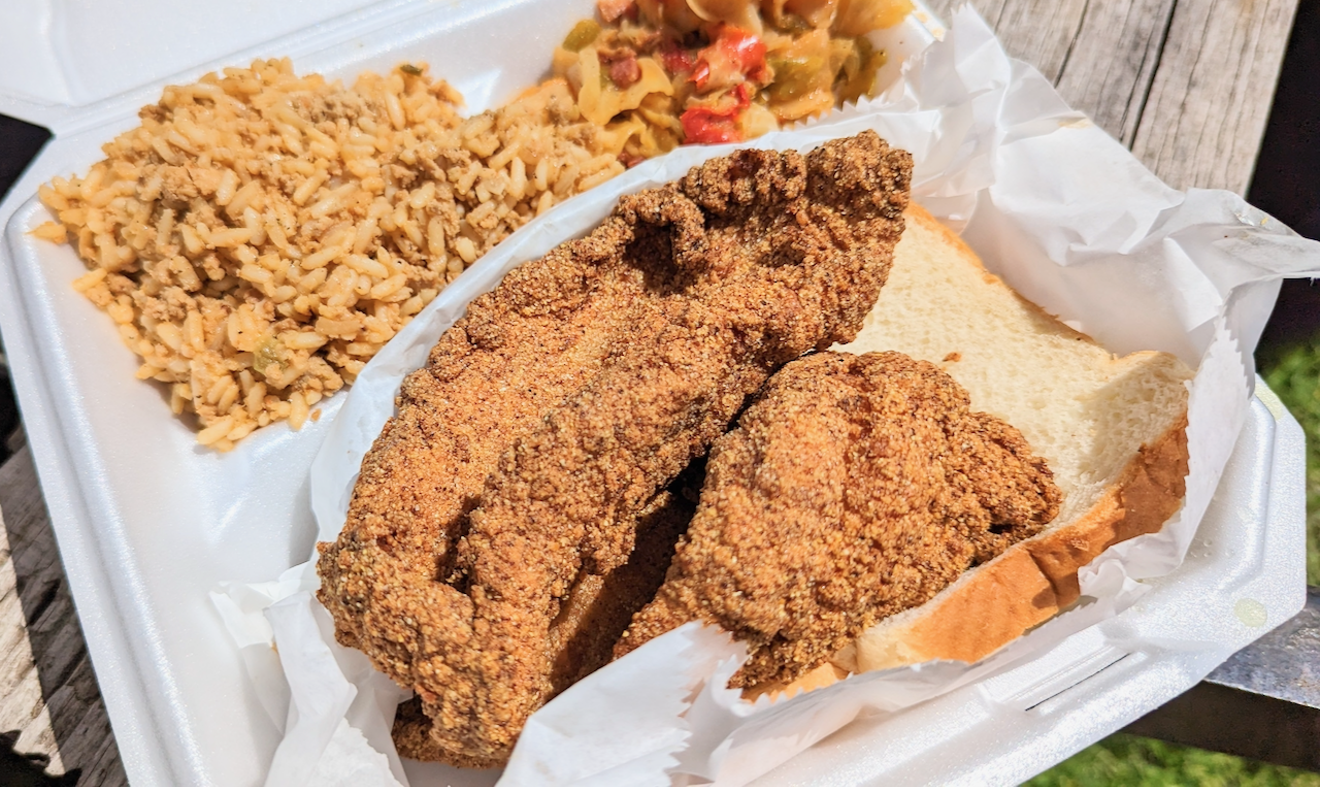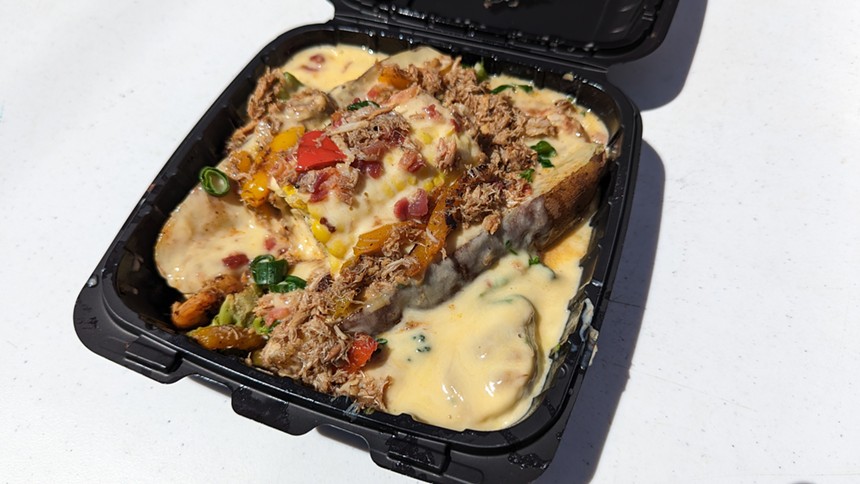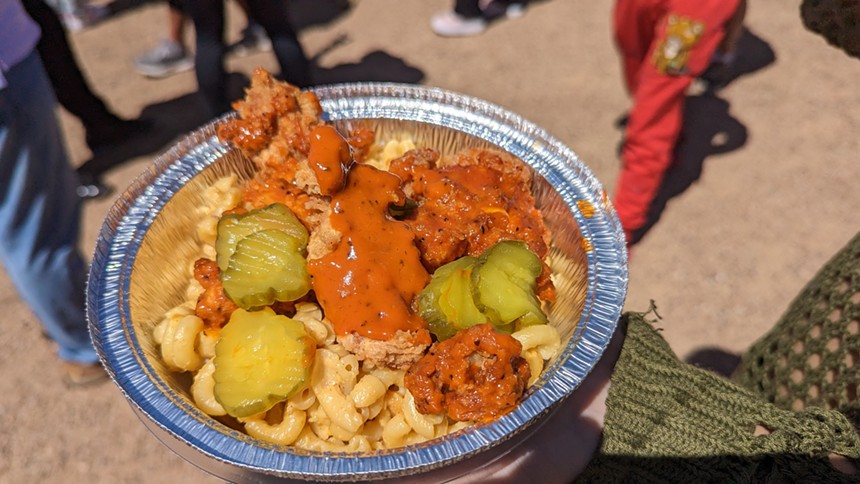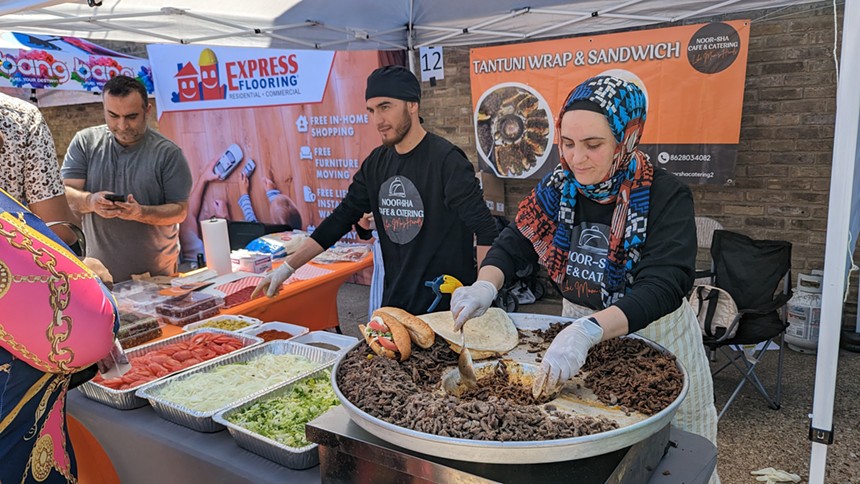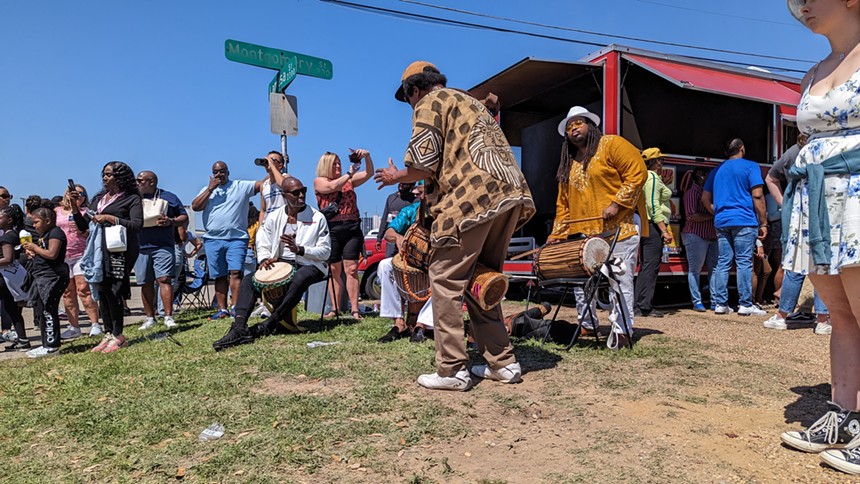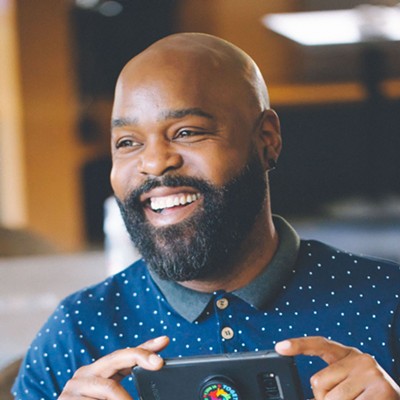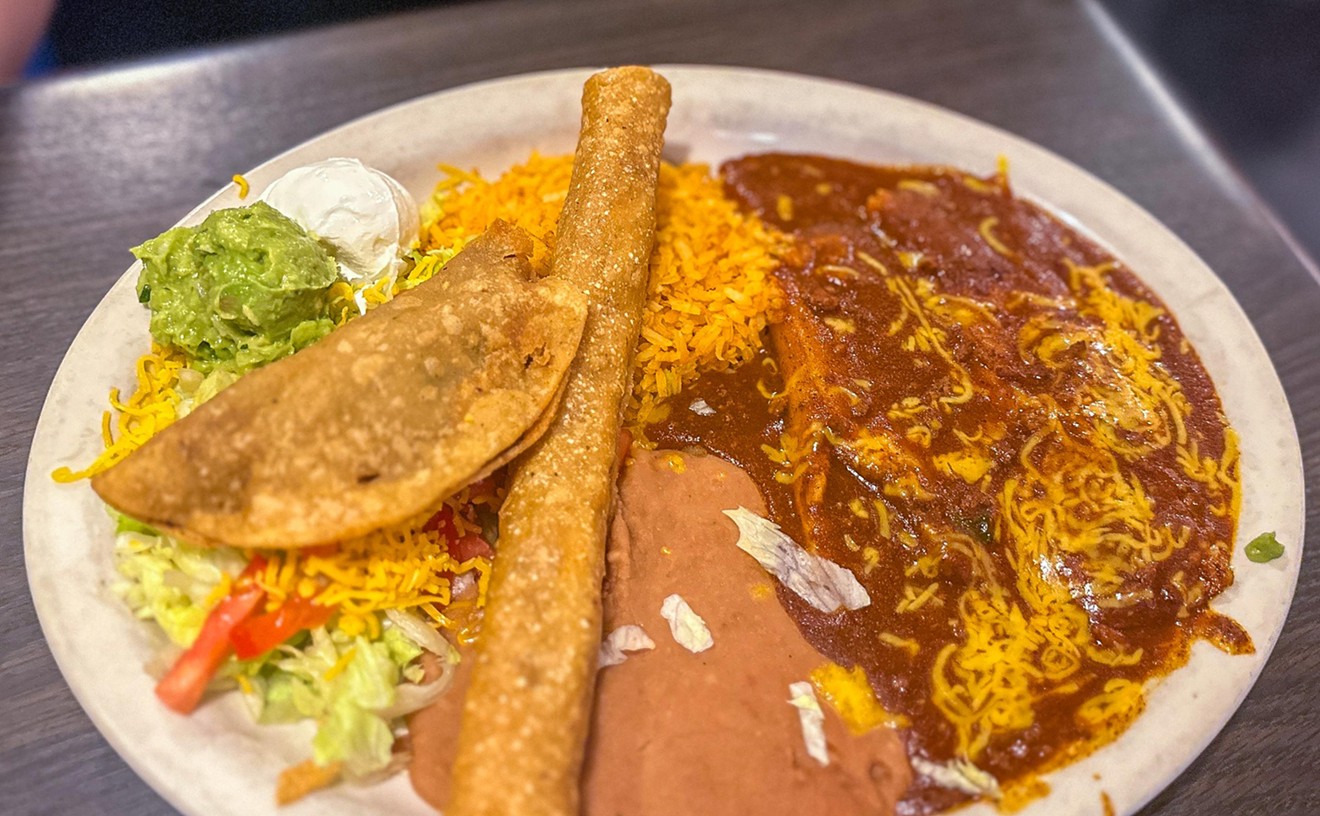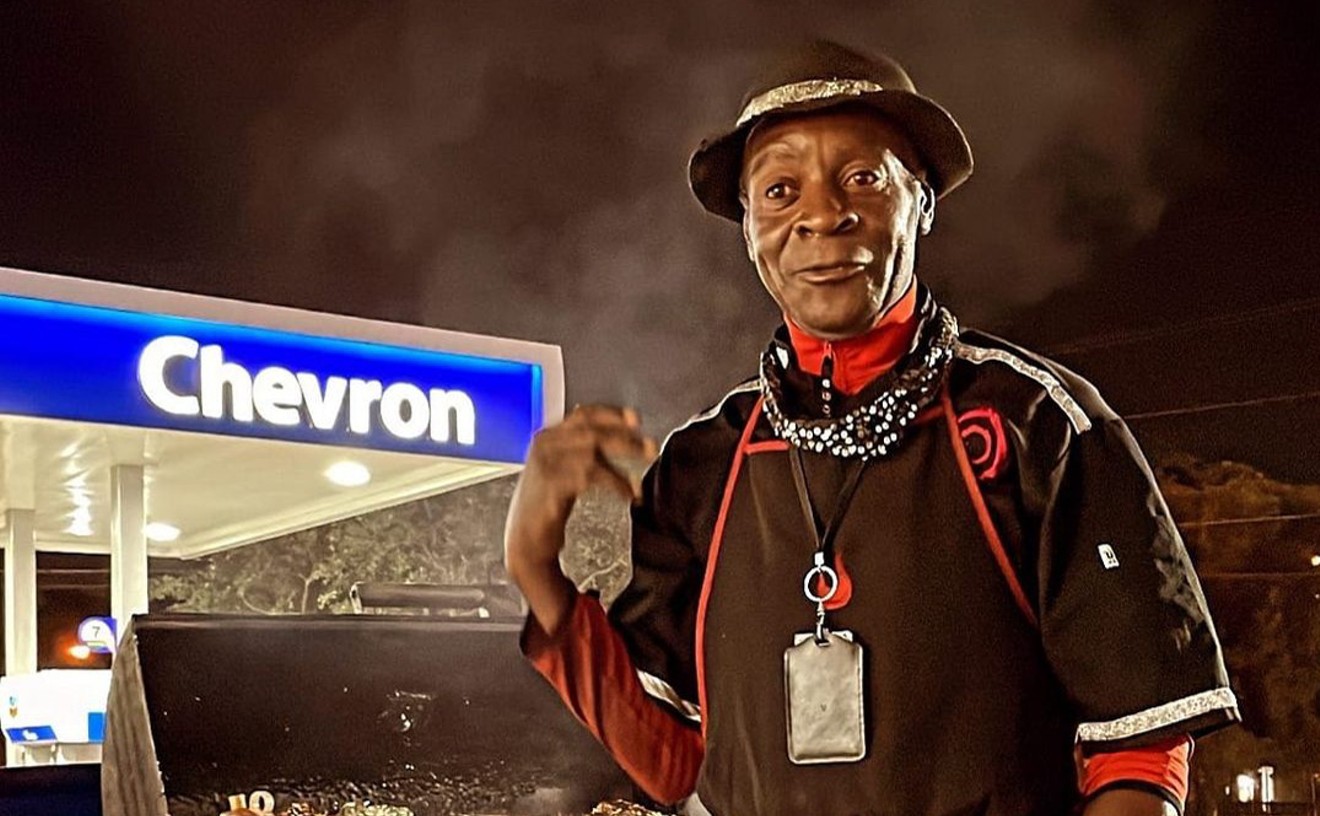This is the time of year when we're invaded by crane flies and summer dresses as we prepare for the Texas heat. Sunday, if you turned your head slightly to the south of the city, you might have noticed the sweet smells of a simmering feast and heard the rumbling sounds of the alluring African drum. Those aromas and music would be coming from the Sunny South Dallas Food Park (formerly known as the MLK Food Park).
There is a wide variety of foods, goods and services provided by vendors from the neighborhoods of the south side of Dallas. Dee Powell, who organizes these events with her organization DRBTS (Do Right By The Streets), says that although it may seem like it, this event is not a festival.
“We tend to stay away from the term 'festival' as it implies something that’s just for a special occasion and that’s not what the food park is," Powell says. "South Dallas doesn’t need any more special events just to show up and leave. The food park shows what all South Dallas has in resources and services. It’s about economic mobility for South Dallas. “
At the Sunny South Dallas Food Park, you can find independent business owners selling anything from decorative scented candles to stylish fedoras. With all the various vendors from the area and the bumping music playing in the background, there is plenty to keep you occupied while you leapfrog to each food truck, which is entirely why we went.
One of the first trucks that caught our gaze was the one with funnel cake at the entry point. We decided to be adults for once in our lives and not eat dessert before our savory entrées. The smell of a fish fry lured us to the back, where we had some of the best catfish this side of the Trinity River.
Fish Trap, a locally owned catering outfit, serves up thick fillets, lil' reefers (fish nuggets) and sides like fried cabbage and dirty rice. Don't blush, but their menu declares "Beware - This FATCAT will have you cumming back to back” for $10. For $20, you can get the “suck deez neckbones,” which we decided to maybe try another time.
Another star player at the food frenzy was Mac and Fromage with its macaroni and cheese bowls topped with either Nashville hot, Cajun or Buffalo ranch chicken. Depending on your hunger level, this can easily be shared by two. For those who truly want to enjoy the day, there are plenty of booths for daiquiris and cocktails throughout the event. As the crowds started growing we decided to cut our losses and come back for the funnel cake during next month’s event. The moral of the story, come early.
South Dallas, like other places in North Texas, could use all the help it can get. Organizations like DRBTS are attempting to right the wrongs with a city that historically failed the area. In 1930, people of color thrived in Freedman’s towns of North Dallas. North Central Expressway was built directly on top of a booming, economically sound Black neighborhood that divided North Dallas into east and west. The residents of the Freedman’s towns were forced to go south in search of housing. This destroyed not only families, but also historical sites that were important to that community.
In the 1950s, South Dallas was completely composed of white residents and redlining was alive and well.
After WWII, many Black families who served were able to procure the funds to purchase a new home and a bright future. But in 1950, when a Black family purchased a new home, it was either destroyed by segregationists or the families were harassed until they were forced to move.
After laws were changed and minorities started moving into South Dallas, white residents quickly moved away — taking much municipal support with them — resulting the South Dallas we know today. Now, businesses and residents are doing their best to celebrate and advocate for the neighborhood they want to live in.
For more information on future events, you can check in with Sunny South Dallas Food Park's Instagram. These monthly events will run from April to July.
[
{
"name": "Air - MediumRectangle - Inline Content - Mobile Display Size",
"component": "18855504",
"insertPoint": "2",
"requiredCountToDisplay": "2"
},{
"name": "Editor Picks",
"component": "17105533",
"insertPoint": "4",
"requiredCountToDisplay": "1"
},{
"name": "Inline Links",
"component": "18349797",
"insertPoint": "8th",
"startingPoint": 8,
"requiredCountToDisplay": "7",
"maxInsertions": 25
},{
"name": "Air - MediumRectangle - Combo - Inline Content",
"component": "17105532",
"insertPoint": "8th",
"startingPoint": 8,
"requiredCountToDisplay": "7",
"maxInsertions": 25
},{
"name": "Inline Links",
"component": "18349797",
"insertPoint": "8th",
"startingPoint": 12,
"requiredCountToDisplay": "11",
"maxInsertions": 25
},{
"name": "Air - Leaderboard Tower - Combo - Inline Content",
"component": "17105535",
"insertPoint": "8th",
"startingPoint": 12,
"requiredCountToDisplay": "11",
"maxInsertions": 25
}
]

